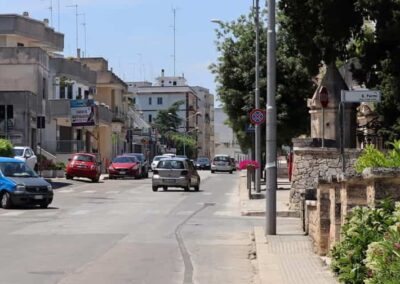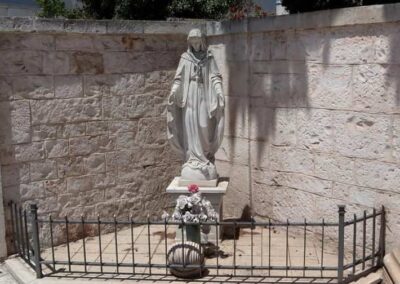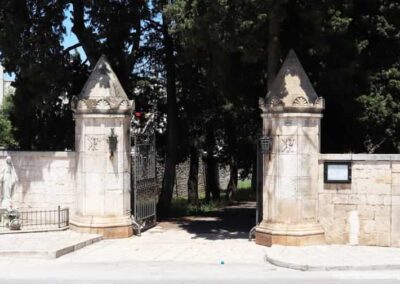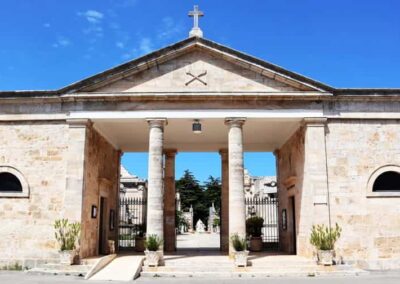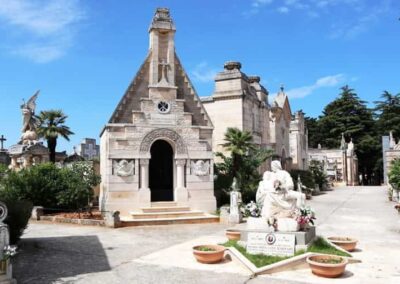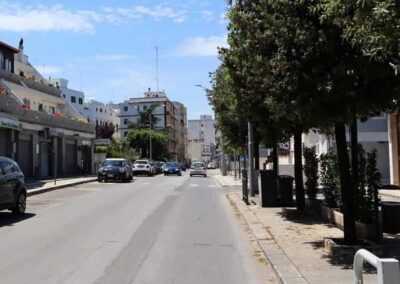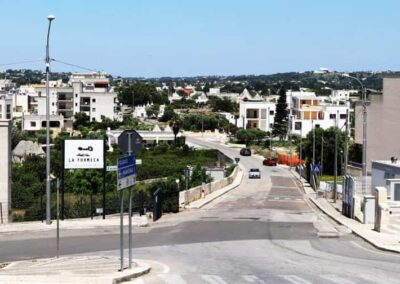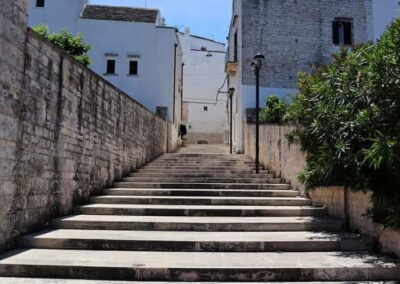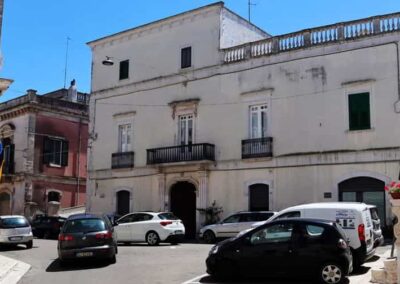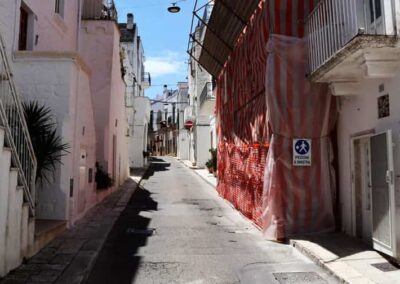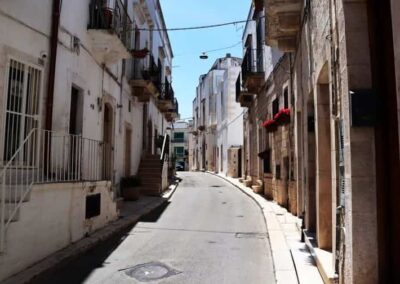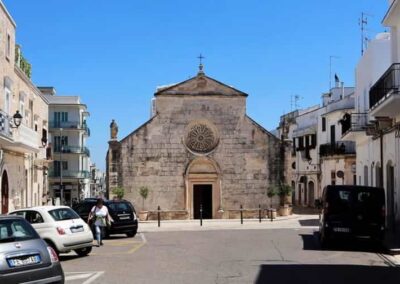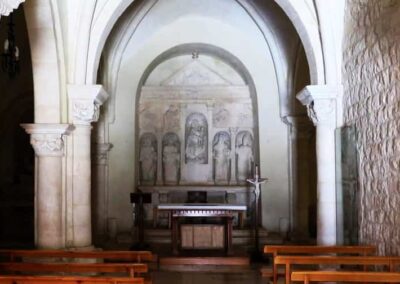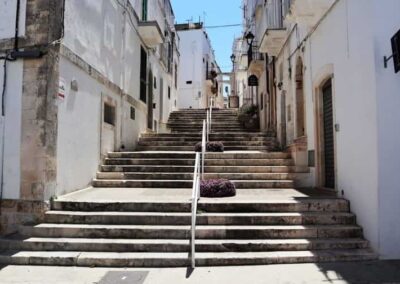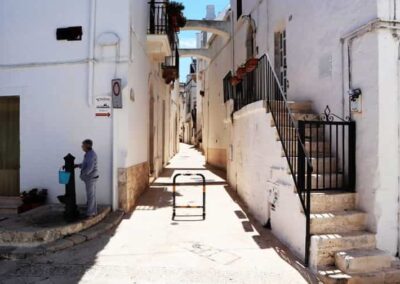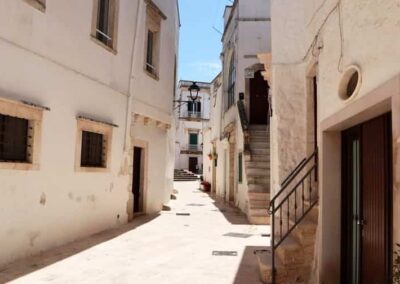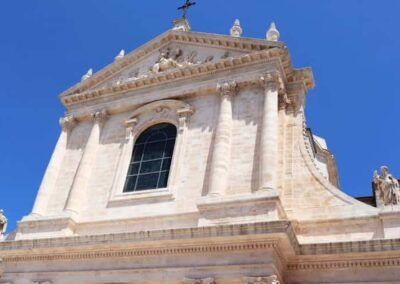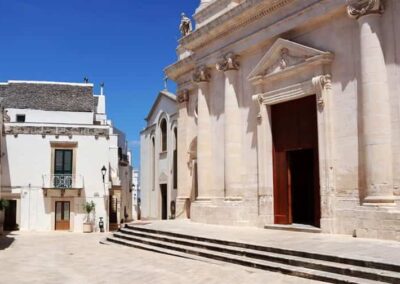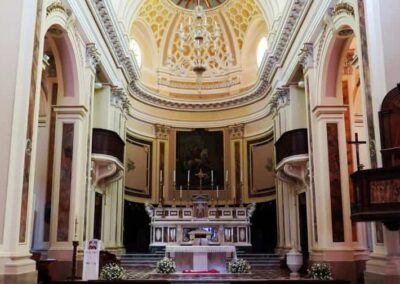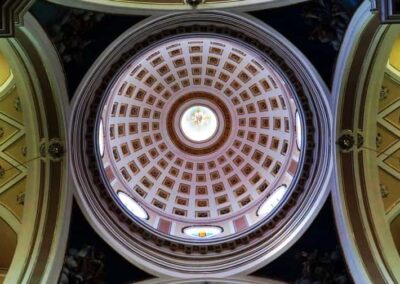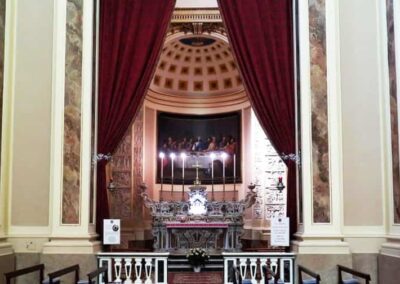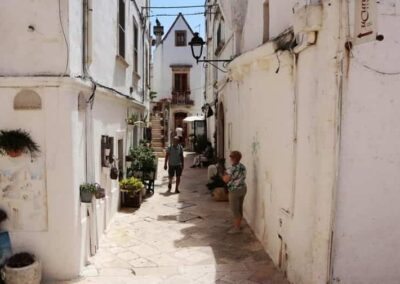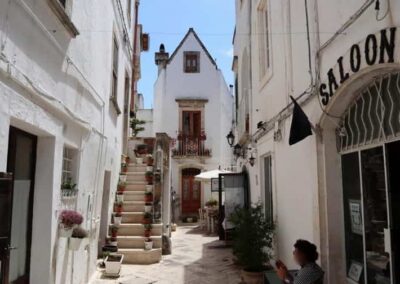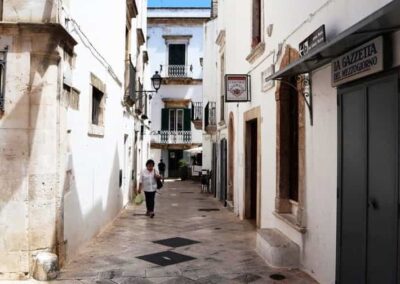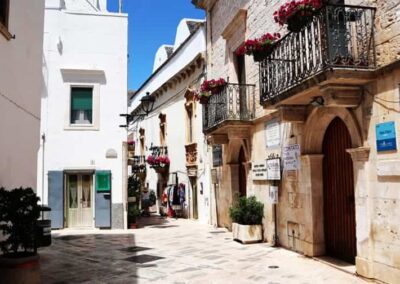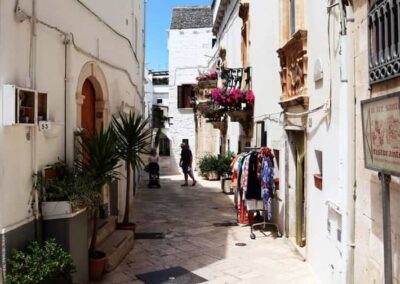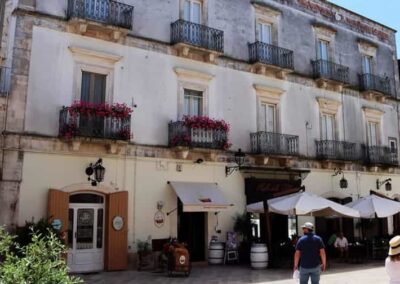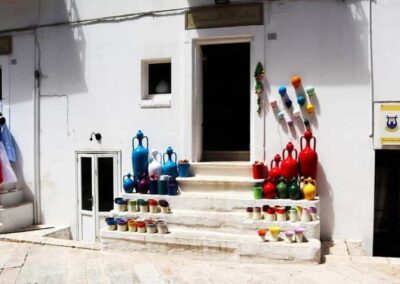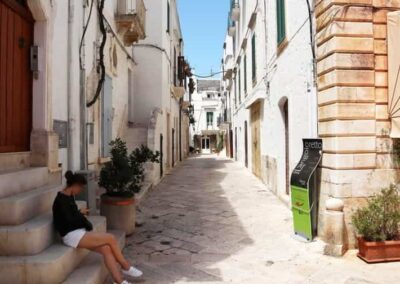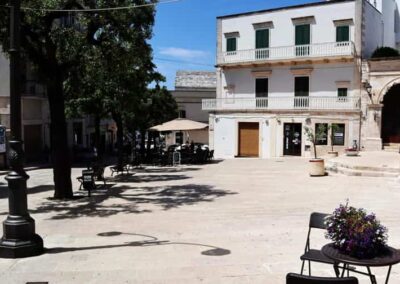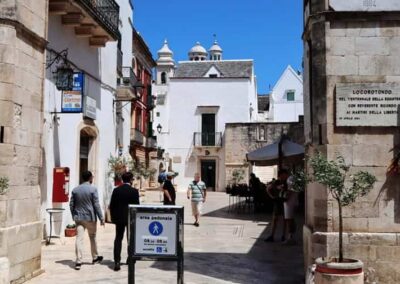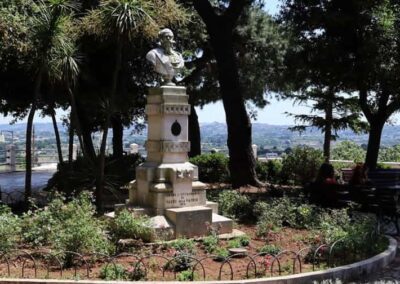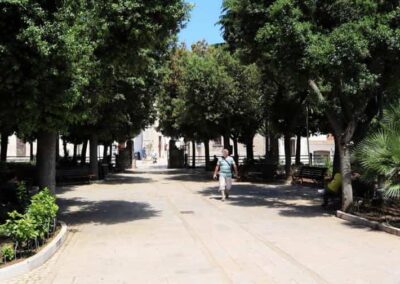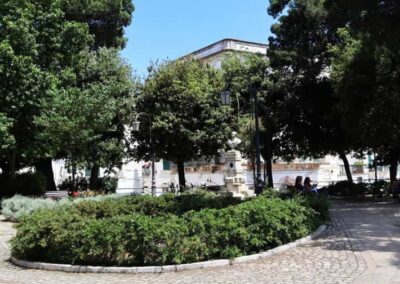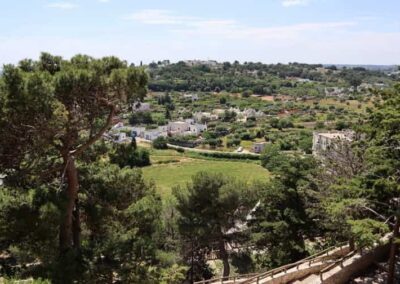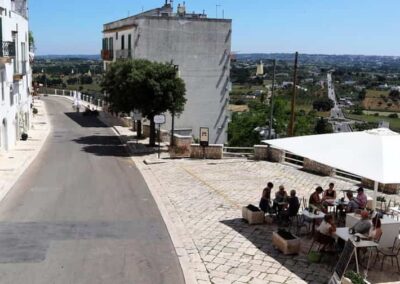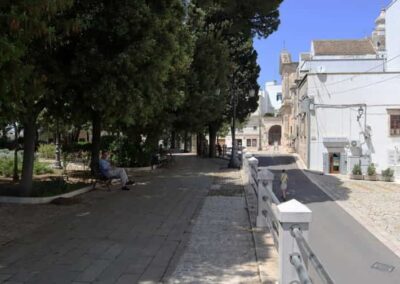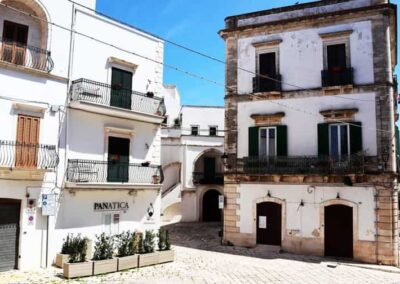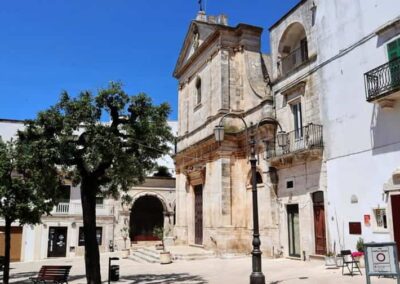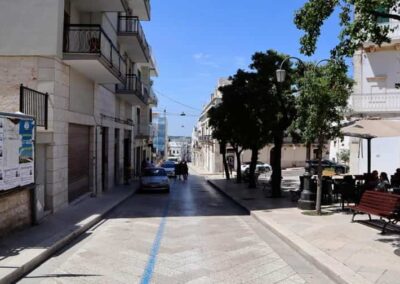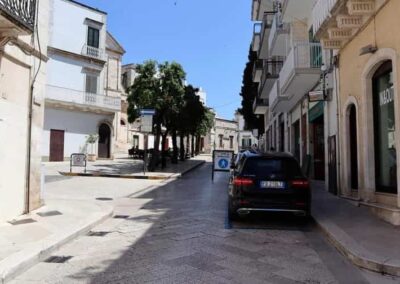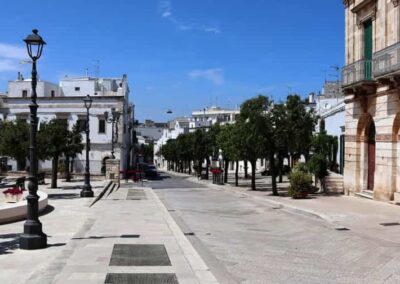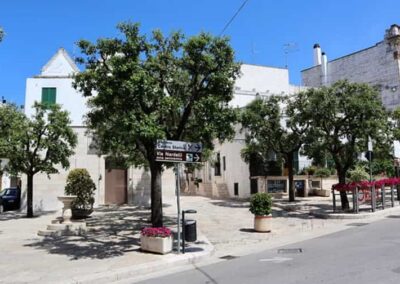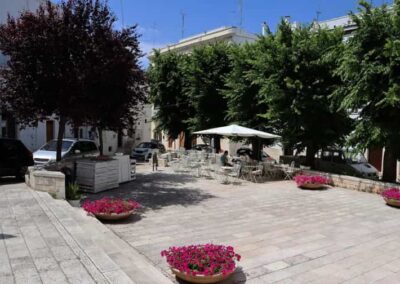HOME
THE REGIONS OF ITALY
PLACES IN ITALY
Italy in Photos
Via Cavour, 70010, Locorotondo, Italy (June 2019)
Locorotondo
Locorotondo is one of the most enchanting towns in southern Italy, perched gracefully on a hilltop in the heart of the Itria Valley in the Apulia region. Its name, meaning “round place,” perfectly describes the circular layout of the historic centre, a unique design that distinguishes it from other nearby towns. Surrounded by a landscape of vineyards, olive groves, and dry-stone walls, Locorotondo offers visitors a sense of tranquillity and timeless beauty. The town is part of the province of Bari and is often included among “I borghi più belli d’Italia,” a list of the most beautiful villages in the country.
Walking through Locorotondo feels like stepping into a postcard. The narrow, winding streets are lined with whitewashed houses that gleam under the southern sun. Many of these homes feature pitched roofs called “cummerse,” a traditional architectural style found only in this part of Apulia. The effect is both charming and distinctive, making the old town a favourite subject for photographers and artists. Every corner reveals flower-filled balconies, small courtyards, and sudden glimpses of the surrounding countryside, where trulli houses and vineyards stretch as far as the eye can see.
The town’s beauty is not only architectural but also deeply cultural. Locorotondo has a calm, welcoming atmosphere and a strong sense of local identity. Its residents take great pride in their traditions, especially those linked to wine production. The Locorotondo DOC white wine, crisp and aromatic, is one of the best-known wines of Apulia. Visitors can taste it in small wineries or enjoy it in family-run trattorias that serve regional dishes such as orecchiette pasta, grilled meats, and fresh vegetables seasoned with local olive oil.
Religious festivals and community events mark the rhythm of life throughout the year. The Feast of Saint George, the town’s patron, is celebrated in April with processions, music, and fireworks. During summer, Locorotondo hosts concerts and cultural gatherings, including the Locus Festival, a renowned event that attracts international musicians and fans of jazz, soul, and world music. At night, the town glows with warm light, and its quiet lanes invite visitors to linger and enjoy the peaceful ambiance.
Locorotondo is more than a destination; it is an experience of authentic southern Italian life. Its combination of history, art, nature, and hospitality makes it a perfect stop for anyone exploring the Itria Valley or seeking a glimpse of Italy’s purest beauty.
Worth a Visit
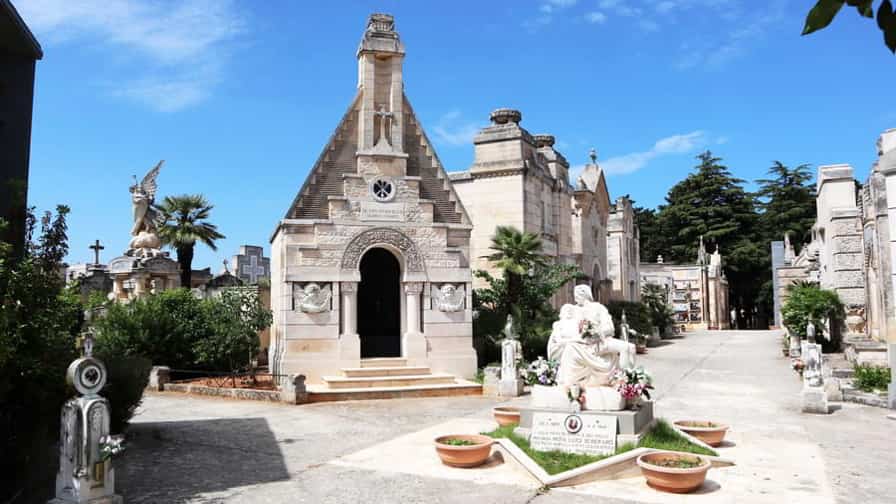
The Cimitero Comunale di Locorotondo in Locorotondo is an important cultural and spiritual landmark that reflects the town’s traditions, religious devotion, and deep sense of community. Situated just outside the historic centre, the cemetery is more than a burial ground: it is a place where memory, architecture, and the surrounding Apulian landscape come together in harmony. Locorotondo, renowned for its whitewashed houses and circular layout overlooking the Valle d’Itria, has always been closely tied to its territory, and the cemetery continues this bond by embodying both dignity and beauty in a setting of peace and reflection. The layout of the cemetery mirrors the town’s characteristic order and elegance. Long, straight avenues guide visitors past carefully arranged tombs, family chapels, and small mausoleums, many of which display fine craftsmanship in stonework, iron, and sculpture.

The Chiesa Rettoria Oratorio Santuario di San Rocco in Locorotondo is one of the town’s most significant places of worship, a sanctuary that embodies both spiritual devotion and local identity. Dedicated to San Rocco, the patron saint of Locorotondo, the church is more than a religious building: it is the heart of centuries-old traditions, celebrations, and communal faith that continue to unite the town’s people. Situated within the historic center, the sanctuary stands as a symbol of protection, gratitude, and resilience, reflecting the enduring bond between the saint and the community. San Rocco, venerated across Europe as a protector against plagues and epidemics, became particularly important in Locorotondo during the sixteenth century, a time when southern Italy, like much of Europe, was struck by outbreaks of disease.
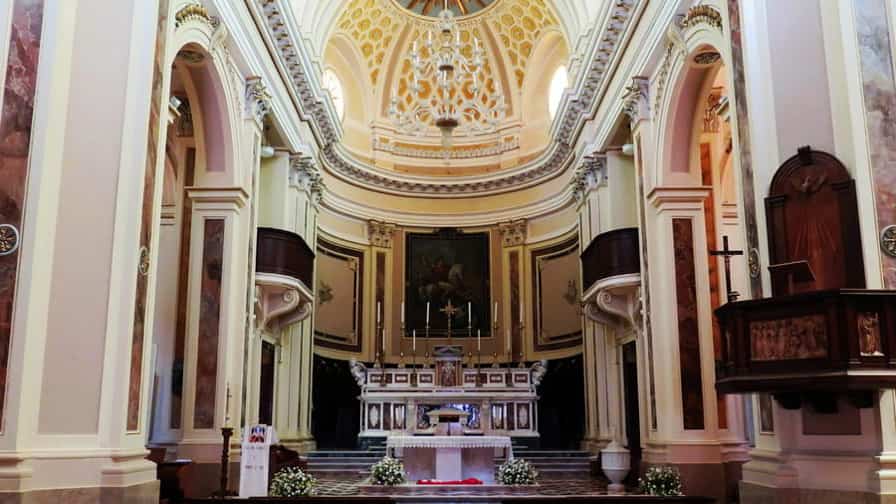
The Chiesetta Rettoria Maria Santissima Annunziata in Locorotondo is a small yet deeply meaningful religious site that reflects the town’s devotion, history, and architectural heritage. Located within the charming whitewashed streets of the historic centre, this church is a place of quiet spirituality and an important landmark for the local community. Dedicated to the Annunciation of the Virgin Mary, it stands as a testimony to centuries of faith and to the enduring cultural richness of the Valle d’Itria. The origins of the church date back several centuries, when small chapels and oratories were built to serve as focal points of devotion for neighbourhoods and confraternities in Locorotondo.
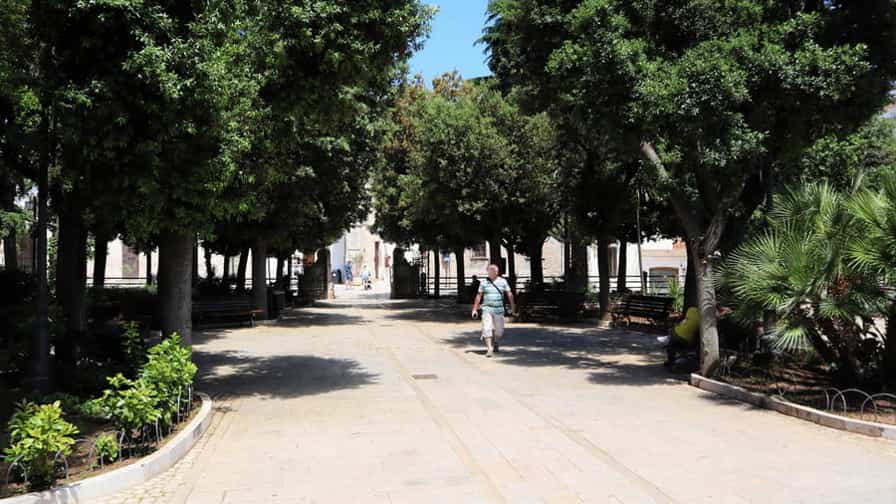
The Villa Comunale in Locorotondo is one of the town’s most cherished public spaces, a peaceful garden that offers both residents and visitors a place of relaxation, leisure, and scenic beauty. Located at the edge of the historic centre, the villa combines the charm of a traditional Italian garden with the breath-taking views that define the Valle d’Itria. For many, it is not only a green retreat but also a cultural and social meeting point that reflects the welcoming spirit of Locorotondo. The park was created to provide a public space where people could enjoy nature, stroll among shaded paths, and gather in an atmosphere of serenity.
Photo Gallery of Walk 1 – Via Cisternino to Piazza Fra Giuseppe Andrea Rodio
Approximately 1.44 km – 0.89 miles
The walk starts in Via Cisternino – Via Enrico Fermi – Cimitero Comunale di Locorotondo – Via Enrico Fermi – Via Cisternino – Via Cavour – Corso Umberto I’ – Via Morosini – Chiesa Rettoria Oratorio Santuario di S.Rocco patrono, Largo S. Rocco – Largo S. Rocco – Chiesa Rettoria Madonna della Greca, Largo Madonna della Greca – Via Vittorio Veneto – Via Giannone – Piazza Fra Giuseppe Andrea Rodio – Chiesa Rettoria Oratorio di Maria SS Annunziata e Sacro Cuore e S.Lucia, Piazza Fra Giuseppe Andrea Rodio
Photo Gallery of Walk 2 – Via Dura to Via Cavour
Approximately 0.82 km – 0.51 miles
The walk starts in Via Porta Nuova – Via Dura – Via C. Battisti – Via Morelli – Via Antonio Bruno – Piazza Vittorio Emanuele – Piazza Dante – Villa Comunale Giuseppe Garibaldi, Piazza Dante – Corso XX Settembre – Via Cavour – Via Semeraro Arciprete – Largo Giuseppe Mazzini – Via Cavour
COPYRIGHT © 2018-2025 ITALY IN PHOTOS - ALL RIGHTS RESERVED
